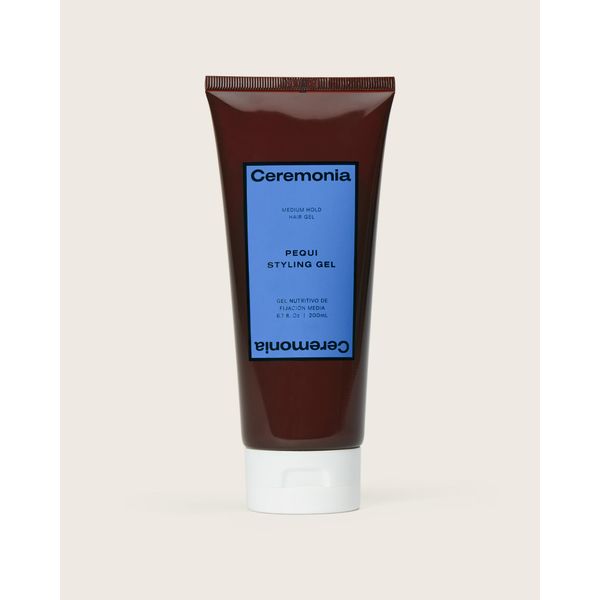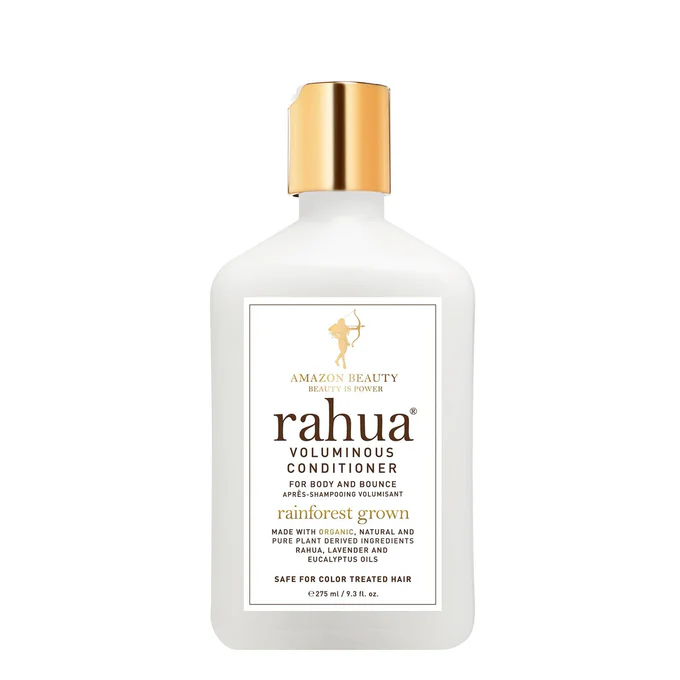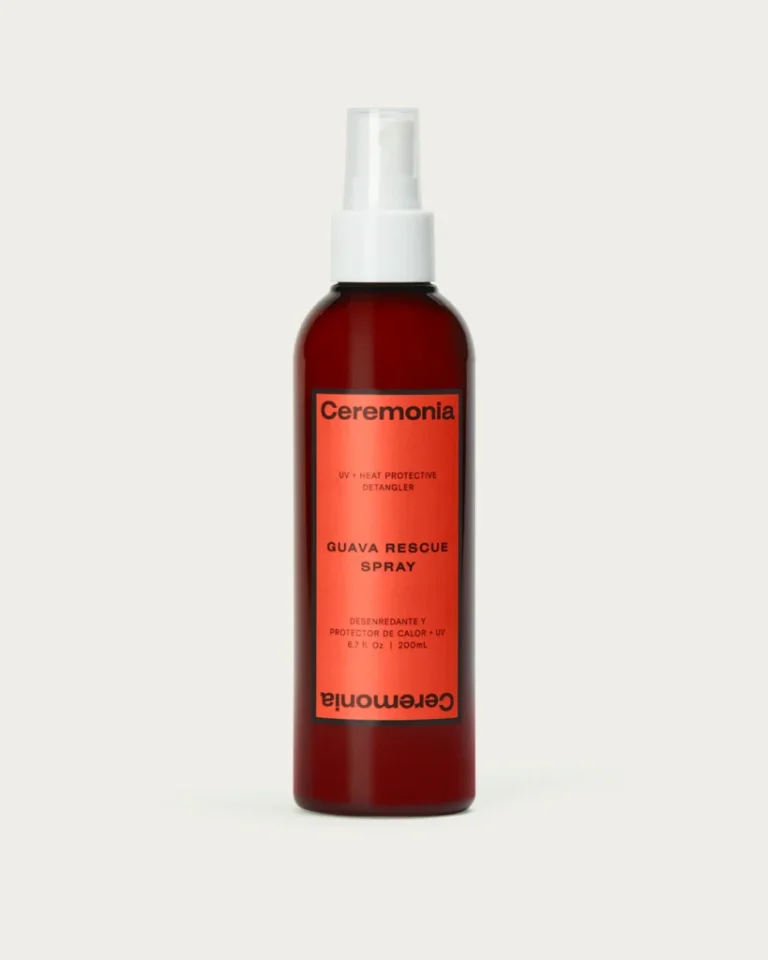Low-Toxic Curly Hair Routine: Products That define Without Chemicals

If you have curly hair, you’ve probably heard it all: scrunch it, plop it, refresh it, diffuse it. But here’s what the curl community doesn’t talk about enough- what’s actually in those products we’re layering on our hair every single day.
Curly hair requires moisture, definition and frizz control, which means we’re using a lot more product than our straight-haired friends. Multiple leave-ins, gels, creams, mousses and curl refreshers add up. When those products are loaded with synthetic fragrances, silicones, sulfates and preservatives, we’re exposing ourselves to a chemical cocktail that our bodies just don’t need.
The good news? You don’t have to choose between beautiful, defined curls and clean ingredients. A low-toxic curly hair routine is not only possible- it can actually give you better results than conventional products. Let me show you how.
WHY YOUR CURLY HAIR PRODUCTS MIGHT BE TOXIC
Before we dive into the routine, let’s talk about what makes conventional curl products problematic. Curly hair products are particularly concerning because:
We use more of them. The Curly Girl Method often involves 3-5 products per wash day and many curlies refresh daily. That’s a significant amount of product absorption through your scalp and skin.
They’re designed to coat the hair. Many curl creams and gels contain heavy silicones (dimethicone, cyclopentasiloxane) that build up on hair over time. While they create initial shine, they actually seal out moisture and trap chemicals against your scalp.
Fragrance overload. Curl products are often heavily scented to mask the smell of other ingredients. “Fragrance” can hide hundreds of undisclosed chemicals many of which are endocrine disruptors linked to hormone imbalance and reproductive issues.
Formaldehyde-releasing preservatives. Ingredients like DMDM hydantoin, diazolidinyl urea and quaternium-15 slowly release formaldehyde (a known carcinogen) to extend shelf life. These are shockingly common in hair gels and creams.
Sulfates and harsh cleansers. Even “curly-friendly” shampoos can contain sodium lauryl sulfate or sodium laureth sulfate, which strip natural oils and can contain the carcinogen 1,4-dioxane as a byproduct of manufacturing.
Your scalp is skin, and it’s highly absorbent. What you put on your hair doesn’t just sit there-it penetrates. Especially if you’re someone who wears your hair products overnight or refreshes daily, switching to low-toxic options is one of the most impactful changes you can make.
the complete low-toxic curly hair routine
Step 1: Clarify gently (weekly or bi-weekly)
Start with a clean slate. Even low-tox products can build up over time, so clarifying is essential but skip the harsh sulfates.
What to look for: Apple cider vinegar rinses or gentle cleansing shampoos with natural surfactants like coco-glucoside or decylglucoside.
Avoid: Sodium lauryl sulfate, sodium laureth sulfate, ammonium laureth sulfate.
Step 2: cleanse with a low-poo or co-wash
For your regular wash days, choose a gentle, sulfate-free cleanser that won’t strip your curls.
What to look for: Plant-based cleansers, saponified oils or cleansing conditioners with recognised ingredients.
Avoid: Sulfates, synthetic fragrances, parabens and silicones
Step 3: Condition deeply
Curly hair is naturally drier because the oils from your scalp have a harder time travelling down the curl pattern. Deep conditioning is non-negotiable.
What to look for: Rich plant-based butters (shea, mango, cocoa) natural oils( argan, coconut, jojoba) and humectants like vegetable glycerin or aloe vera.
Avoid: Behentrimonium chloride in high concentrations, synthetic fragrances and amodimethicone.
step 4: Apply leave-in treatment
This is where moisture retention begins. A good leave-in creates the foundation for definition and frizz control.
What to look for: Lightweight, water-based formulas with botanical extracts, plant proteins and natural humectants.
Avoid: Heavy mineral oils, petrolatum and silicones that create buildup.
STEP 5: Define and style
Here’s where the magic happens- and where clean products truly shine. This is where i reach for the RAHUA Control Cream Anti-Frizz Curl Styler.
What sets RAHUA apart in the clean curl space is that it delivers serious definition and frizz control without any of the questionable ingredients. The formula features rahua oil (from the amazon rainforest), which is rich in omega-9 fatty acids that actually strengthen the hair shaft while smoothing the cuticle. There’s also organic quinoa, which adds natural protein to help curls hold their shape without crunch or stiffness.
How to apply: On soaking wet hair, rake a quarter-sized amount (more for longer/thicker hair) through from mid-length to ends. Then scrunch upwad to encourage curl formation. The cream works beautifully whether you air-dry or diffuse.
What i love most is that it creates soft, touchable curls with lasting definition- no gel cast to scrunch out, no sticky residue, no weird chemical smell. Just healthy, bouncy curls that move naturally.
STEP 6: LOCK IT IN (OPTIONAL)
If you need extra hold, layer a clean gel over your curl cream.
What to look for: Flaxseed gel (you can even make your own at home!) aloe vera gel or plant-based gels with natural hold ingredients.
Avoid: PVP (polyvinylpyrrolidone), synthetic polymers and formaldehyde-releasing preservatives.
step 7: refresh between washes
For day-two or day-five curls, a good refresh spray is essential.
What to look for: Water-based sprays with light botanical extracts or DIY mix of water, aloe vera and a few drops of your favourite plant oil.
Avoid: Aerosol sprays with propellants, synthetic fragrances and drying alcohols (isopropyl alcohol, SD acohol 40).
BEYOND PRODUCTS: LOW TOX CURL CARE HABITS
Protect your hair while you sleep. Switch to a silk or satin pillowcase to reduce friction and breakage. Bonus: these materials don’t absorb products like cotton does, so you get more benefit from what you’ve applied. If you prefer to keep your curls completely protected and contained while you sleep, the BLISSY | Mulberry Silk Hair Bonnet is a game-changer.
It keeps your curl pattern intact overnight, prevens frizz and-like silk pillowcases- won’t rob your hair of the moisture and products you’ve carefully applied. Plus, it’s gentle enough that you won’t wake up with creases or flattened curls.
Consider your water quality. Hard water can wreak havoc on curls, leaving mineral buildup that makes hair feel straw-like. A shower filter removes chlorine, heavy metals and excess minerals-which means your clean products can actually work better.
Be mindful of heat. If you diffuse, use a lower heat setting. High heat can alter your curl pattern over time and requires more product to combat the damage.
Trim regularly. Healthy ends means better curl formation and less need for heavy styling products to mask damage.
THE BOTTOM LINE
Switching to low-toxic curly hair routine isn’t about perfection-it’s about progress. Every conventional product you swap out is one less source of daily chemical exposure. And honestly? Once you experience how well clean products can perform, you won’t want to go back.
Your curls are beautiful and they deserve products that enhance them without compromise. You shouldn’t have to choose between definition and health, between frizz control and safety. With the right low-tox routine, you can have it all.
Ready to make the switch? Start with one product at at time and pay attention to how your hair (and your body) responds.You might be surprised at how much better your curls look-and how much better you feel-when you remove the chemical burden.
What’s your biggest curly hair concern? Drop a comment below and let’s chat about clean solutions!
Looking for more low-toxic swaps? Check out our guides on [clean skincare], [low-toxic bodycare] and [pregnancy-safe beauty]. Let’s make clean living simple, accessible and totally doable-one product at a time.




